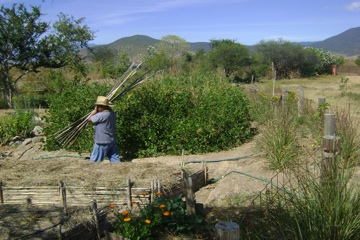“Here in Mexico you have campesinos who come out to work in their fields during the day, but live in the village. They can’t understand why anyone would want to live in the field.”
His friends in the city don’t understand either: Why would anyone give up access to cinema, theater, restaurants, coffee shops, and WiFi in order to live in the middle of acres of cornfields?
